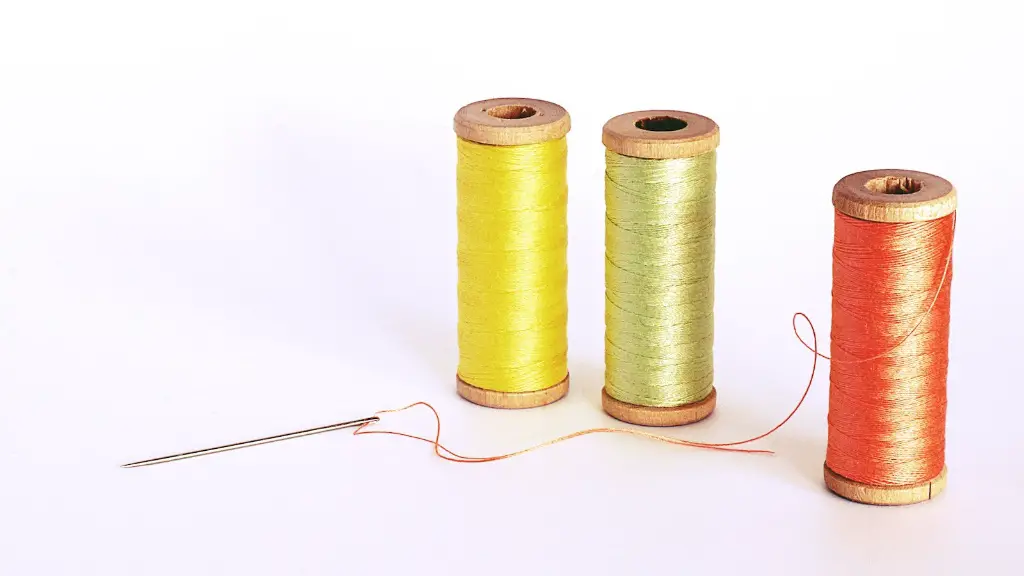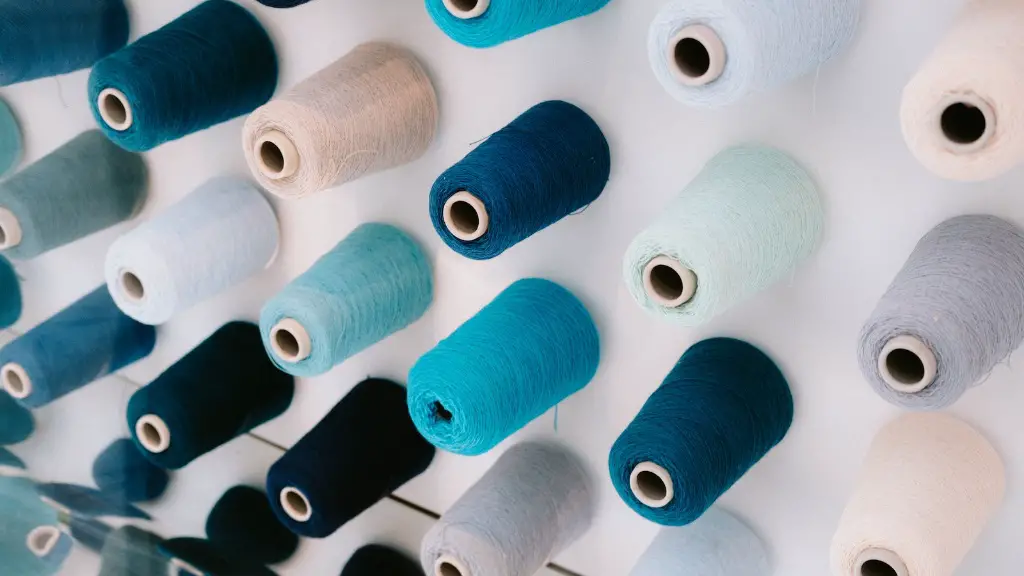Basics of Embroidery Using A Sewing Machine
Embroidery is an art form using decorative items such as beads, sequins, ribbon, and thread to create patterns on fabrics. Sewing machines can make the art of embroidery easier and enjoyable. Using a machine to embroider is much faster and less stressful than sewing by hand. Sewing machines also enable crafters to create stitches that are otherwise impossible to accomplish with a needle by hand.
The first thing a novice crafter needs to do when it comes to embroidering with a sewing machine is to thread the machine correctly. Having an incorrect thread tension will cause tension problems leading to uneven stitches and fabrics that bunch or twist. Different fabrics also require different tensions, so it is important to understand the type of fabric and the proper tension to use for that particular fabric. The bobbin should also be threaded correctly and in the correct order, so that the stitches produce the desired result.
When using a sewing machine for embroidery one also needs to select the proper foot and needle. Embroidery needles have a larger eye than ordinary sewing needles, which allows the thread to pass through easily without any breakage or tangling. The right foot is also important as it helps keep the fabric in place and helps evenly spread the thread. Having the correct needle and foot is essential to ensure that embroidery stitches are of high quality.
It is important to understand the types of embroidery stitches that the sewing machine can do and pick the ones that are suitable for the project. Traditional embroidery stitches such as chain stitch, blanket stitch, running stitch, and buttonhole stitch can all be done on a sewing machine. When working with a machine for embroidery, it is important to work slowly and be sure to backstitch at the beginning and end of each stitch to secure it. This will ensure that the stitches are even and secure.
Design placement is also important when it comes to embroidery. When using a sewing machine, it is usually best to place the design on the underside of the fabric so that the embroidery is hidden. This way the fabric does not distort and the embroidery is protected from damage. It is important to mark the design with a pencil before beginning so that the design is placed correctly.
Finally, once the embroidery is complete, it is important to secure it. This can be done by sealing the edges of the fabric or stitching a securing stitch along the edges. This will ensure that the embroidery will last and the fabric will not come undone over time.
Types of Embroidery Stitches
There are a wide variety of embroidery techniques that can be used with a sewing machine. Some of the most common types of stitches include straight stitch, zigzag stitch, satin stitch, and outline stitch. Straight stitching is the most basic technique that can be used to create even lines of stitching and is often used to create stripes or borders. The zigzag stitch is used to create strong, durable lines of stitching and can be used to create various patterns and shapes. Satin stitch is an embroidery stitch that has a smooth, even surface and is often used to create lettering. Finally, outline stitch is a method of stitching that involves stitching along the edge of the fabric, creating a bold, intricate pattern.
The blanket stitch is one of the most versatile embroidery stitches and can be used to create a variety of designs. It is commonly used to add trim to blankets, clothing, and bags. The buttonhole stitch is also a useful technique used to add trim to a variety of fabrics. Additionally, the running stitch is a fast, efficient way to add a decorative border or pattern around the edge of the fabric. These are just some of the various embroidery stitches that can be done with a sewing machine.
The reverse appliqué is another popular technique that can be done with a sewing machine. It involves stitching two layers of fabric together and then cutting away the top fabric to reveal the bottom one. This technique can be used to create intricate designs and patterns. The embroidered cross stitch is also a popular technique used to create delicate floral designs or other detailed patterns. Finally, the feather stitch can be used to create a textured, three-dimensional look on the fabric.
The chain stitch is another decorative stitching technique that can be done with a sewing machine. The finished embroidery has a chain-like look and is often used to add texture and dimension to a project. The French knot stitch is also a useful technique used to add texture and dimension to an embroidery project. This technique is more complex than the other embroidery stitches and involves looping the thread through the fabric multiple times.
Tips for Working With Embroidery Thread
When working with embroidery threads, it is important to choose the right thread for the project. This can be done by considering the type of fabric, the desired effects, and the amount of strain the thread will be subjected to. It is important to select a thread that is strong enough to withstand the strain of the stitching and will not break or fray during the process. Additionally, the thread should be of an appropriate color to contrast or match the fabric.
The type of needles used in embroidery should also be considered. Embroidery needles are generally longer than regular sewing needles and usually have a larger eye to accommodate the thicker embroidery thread. It is important to select a needle that is the appropriate size and shape for the type of fabric being used. The needle should also be sharp enough to easily penetrate the fabric without damaging it.
Having the right tools for embroidery is essential for producing quality work. This includes having embroidery scissors, which have angled blades to help cut close to the fabric without damaging it. An embroidery hoop is also important for keeping the fabric in place during stitching. Hoops can be made from a variety of materials, including plastic, wood, and metal. Finally, having tweezers handy will help in picking up and placing beads and other small items on the fabric.
It is important to properly wind the thread onto the bobbin before beginning a project. This can be done by hand or using a bobbin winder. If it is done by hand, it is important to wind the thread evenly so that the stitches are even and not bunched up. It is also important to regularly check the tension of the thread and make sure the stitches are properly secured.
Finally, when working with any fabric, it is essential to take into consideration the stretch, weight, and drape of the material. Different fabrics require different techniques and variations, so understanding the fabric is important when using it to embroider. This will ensure that the embroidery is of the highest quality and the fabric is not damaged by the stitching.
Tools Needed For Embroidery Using A Sewing Machine
In order to embroider using a sewing machine, several tools are necessary. This includes the sewing machine itself, an embroidery foot, and various other notions. An embroidery foot is necessary as it helps keep the fabric in place and helps evenly distribute the thread as it is stitched. Additionally, one needs needles, thread, and scissors appropriate for embroidery.
To properly work with embroidery threads, one needs a threader and a bobbin winder. A threader is a tool used to help thread the needle with the embroidery thread. It can be metal, plastic, or plastic-coated wire and can be found at most fabric stores. The bobbin winder helps wind embroidery thread onto the bobbin, making sure it is evenly distributed. Bobbins come in a variety of colors and are available in most fabric stores.
In addition to these tools, one also needs marking tools such as a fabric pen or chalk to mark the fabric before starting the embroidery. Hoops can also be used to keep the fabric in place while stitching and are available in a variety of materials, including plastic, wood, and metal. Additionally, having tweezers handy will make it easier to place beads or other small items onto the fabric.
Finally, it is important to have an embroidery stabilizer. This is a thin, adhesive-backed material that is placed on the back side of the fabric to prevent stretching or puckering as the embroidery is stitched. Many types of stabilizer are available and can be found in fabric stores. It is important to choose the right one for the fabric and the project to get the best results.
Embroidery Software Programs
Using a computerized sewing machine allows embroidery to be done much more quickly and with greater precision and detail. There are a variety of embroidery software programs that can be used to create and design embroidery patterns. This can be done either directly on the computer or by importing a design from another source. The software enables crafters to interact with and edit the design with ease.
Using the software, crafters can manipulate the design or create a completely new design of their own. This is done by adding elements such as text, images, shapes, stitch patterns, and colors. Additionally, some programs allow crafters to simulate the embroidery process, enabling them to preview the finished product before it is sewn.
Software programs also enable crafters to transform cards and photos into embroidery designs. This allows for more personalization and gives the crafter more freedom to create unique designs. Additionally, the software can be used to adjust the size of the design being embroidered. This is important as it enables the crafter to scale the design to fit the project.
Embroidery software programs also allow the crafter to save designs for later use or for sharing with others. This enables crafters to build a library of embroidery designs, which can be used to create a variety of projects. Additionally, the software can also be used to troubleshoot any problems with the stitching or design.
In conclusion, using a sewing machine to do embroidery can be a fun and rewarding experience. With the right tools, techniques, and knowledge, it is possible to create beautiful and unique embroidered pieces. Understanding the basics of embroidery using a sewing machine and learning how to use embroidery software will enable any crafter to produce professional-looking and high-quality embroidered pieces.
How to Wash Embroidery
When it comes to cleaning and maintaining embroidered items, there are a few things one needs to take into consideration. Properly laundering embroidered items will help them last longer and keep them looking their best. It is important to read the care tag that comes with the item to determine the best way to clean it.
Generally, it is best to hand wash embroidered items in warm water with a mild deter





